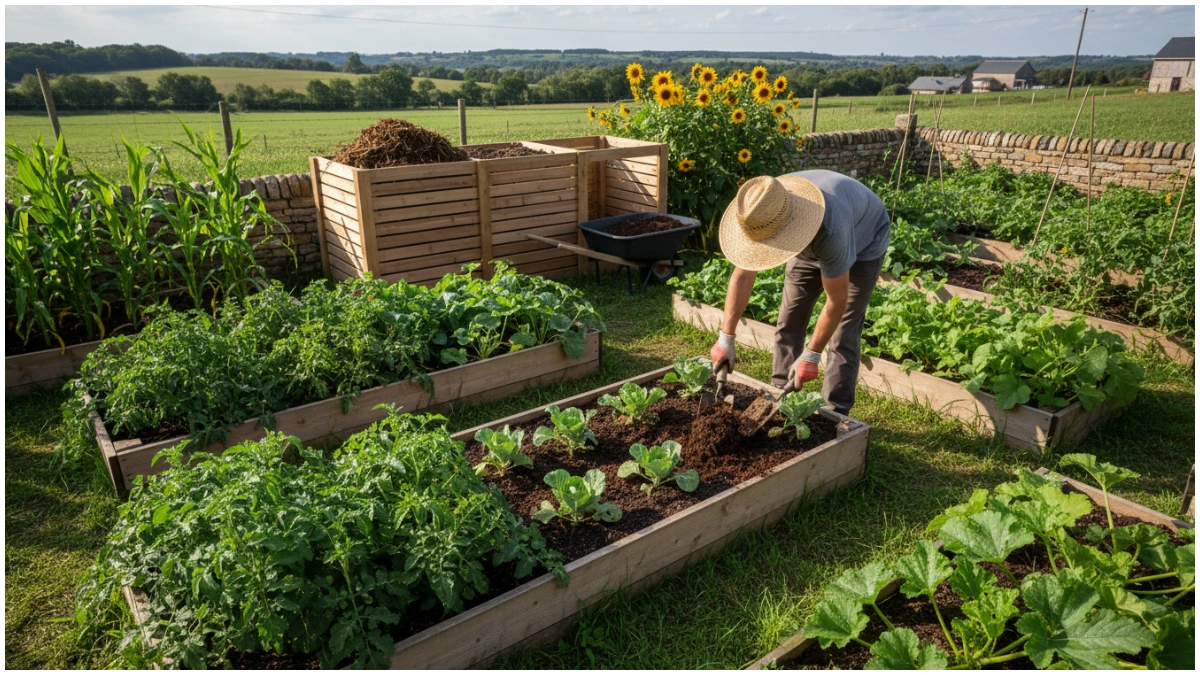Every day, millions of people across the globe toss vegetable peels, coffee grounds, and grass clippings into the rubbish bin, never realizing they’re throwing away something incredibly valuable. These organic scraps, rather than ending up in landfills where they produce harmful greenhouse gases, could be transforming into rich, dark compost that nurtures gardens and helps heal the planet. Composting is one of nature’s most elegant recycling systems, and understanding how it works opens up a world of possibilities for anyone who wants to make a tangible difference in their own backyard.
I’m Katrina, and I’m excited to welcome you to this exploration of composting. Whether you have a sprawling garden or just a small balcony, whether you’re concerned about climate change or simply want healthier plants, composting offers something meaningful for everyone. Over the years, I’ve seen how this ancient practice can reconnect people with natural cycles while addressing some of our most pressing environmental challenges. By the time you finish reading, you’ll understand not just what composting is, but how you can harness its power in your own daily life—no matter where you live or how much space you have.
Understanding What Composting Really Is
Nature’s recycling system: Composting is the controlled biological decomposition of organic materials through the action of microorganisms, transforming waste into a nutrient-rich soil amendment that gardeners often call “black gold”. This process mimics what happens naturally on forest floors, where fallen leaves, dead plants, and animal droppings gradually break down and enrich the soil beneath.
The microscopic workforce: At the heart of composting lies an incredible community of bacteria, fungi, actinomycetes, and other microorganisms that consume organic matter and break it down into simpler compounds. These microbes are the true heroes of the composting process, working tirelessly to transform complex proteins and carbohydrates into nutrients like nitrogen, phosphorus, and potassium that plants can readily absorb.
More than just decomposition: While decomposition happens naturally everywhere, composting is a managed process where we create optimal conditions to speed things up and produce a superior end product. When you compost intentionally, you’re essentially creating a five-star environment for beneficial microorganisms, giving them the perfect balance of food, air, and moisture they need to work effectively.
The transformation process: As organic materials break down, they undergo both physical and chemical changes. Complex organic compounds are reduced to their constituent elements, heat is generated as a byproduct of microbial activity, and the volume of material shrinks dramatically—sometimes by half or more. What emerges at the end is a dark, crumbly substance with an earthy smell that bears little resemblance to the original scraps you added.
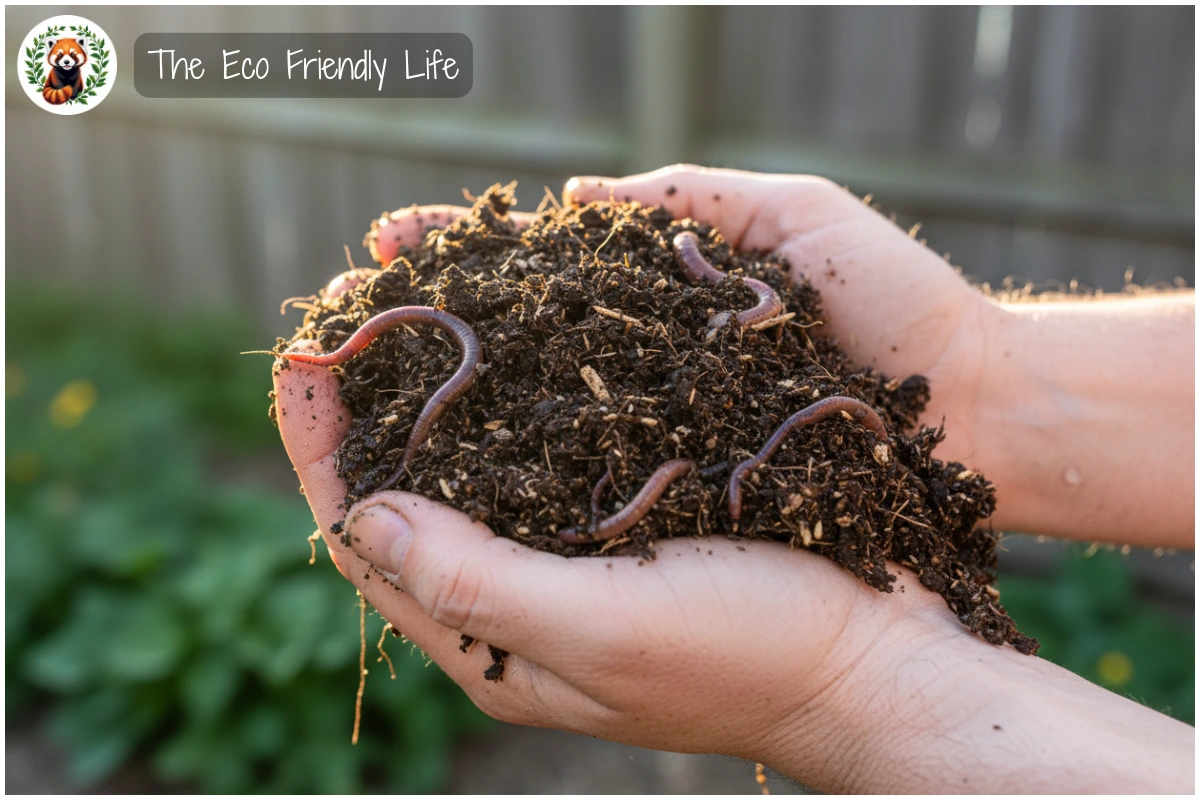
The value of composting extends beyond your garden fence. When organic waste goes to landfill, it decomposes anaerobically—without oxygen—producing methane, a greenhouse gas approximately 28 times more potent than carbon dioxide. By composting instead, you’re keeping materials out of landfill while using an aerobic process that produces far fewer emissions.
To truly understand composting’s environmental benefits, it helps to know the science behind how this transformation actually occurs. Let’s explore exactly how this process works at each stage.
The Science Behind How Composting Works
The four essential phases: Composting typically proceeds through four distinct stages, each characterized by specific temperature ranges and microbial communities. The journey begins with the mesophilic phase, where moderate-temperature microbes start breaking down readily available materials like sugars and simple proteins at temperatures between 20 and 45 degrees Celsius. As these microbes feast and multiply, they generate heat, causing the pile’s temperature to rise.
Entering the heat zone: Once temperatures climb above 45 degrees Celsius, the thermophilic phase begins, and heat-loving microbes take center stage. These thermophiles can break down more complex materials like fats, cellulose, and hemicellulose that their cooler-climate cousins cannot handle. The high temperatures during this phase serve a crucial purpose beyond decomposition—they kill weed seeds and plant pathogens, making the finished compost safer for use in your garden.
Cooling and maturing: After the thermophilic phase peaks, the compost pile gradually cools, signaling the cooling phase where mesophilic microbes return along with fungi and larger organisms like earthworms. These creatures continue breaking down remaining organic matter, refining the material further. Finally, the maturation phase arrives when the pile reaches near-ambient temperature and decomposition slows. During this time, humus forms—that precious dark, stable organic matter—and beneficial organisms like earthworms become highly active, aerating the compost and contributing to its final texture.
The carbon-nitrogen balance: Success in composting hinges on achieving the right carbon-to-nitrogen ratio, ideally around 25:1 to 30:1 at the start of the process. Carbon-rich “brown” materials like dried leaves, cardboard, and wood chips provide energy for microorganisms, while nitrogen-rich “green” materials like food scraps, fresh grass clippings, and manure supply protein for microbial growth. As composting proceeds, this ratio naturally decreases to about 10:1 to 15:1 in the finished product because microbes release about two-thirds of the carbon as carbon dioxide while incorporating the remaining third along with nitrogen into their cells.
Oxygen and moisture requirements: Aerobic composting—decomposition in the presence of oxygen—is far more efficient and odor-free than anaerobic decomposition. Microbes need adequate airflow to thrive, which is why turning or aerating your compost periodically is beneficial. Moisture is equally important, with the ideal consistency often compared to a wrung-out sponge—damp enough to support microbial life but not so wet that it excludes oxygen.

Understanding these scientific principles helps you troubleshoot problems and optimize your composting efforts. Whether your pile is too wet, too dry, heating up excessively, or remaining stubbornly cool, you now know the underlying reasons why. With this foundation established, you’re ready to choose from the variety of practical composting methods that have been developed to suit different living situations and levels of commitment.
Different Composting Methods for Every Situation
Hot composting for the committed: Hot composting requires maintaining a pile at elevated temperatures through careful management of the carbon-nitrogen ratio, moisture, and regular turning. This method can produce finished compost in just a few weeks to a few months, making it ideal for gardeners who generate large volumes of organic material and have the time to maintain the system. The pile must reach at least half a cubic meter to generate and retain sufficient heat, and it needs aeration every few days to maintain oxygen levels.
Cold composting for the patient: Cold composting is a more relaxed approach where you simply add materials to a pile or bin and let nature take its course with minimal intervention. While this method takes much longer—anywhere from three to twelve months depending on conditions—it requires virtually no effort beyond occasionally adding materials and perhaps giving the pile an occasional turn. This approach works well for time-poor gardeners or those with smaller amounts of material to process.
Vermicomposting with worms: Vermicomposting uses specific species of composting worms, typically red wigglers, to process organic waste into nutrient-dense worm castings. The worms consume decomposing organic matter along with the microorganisms breaking it down, then excrete castings that are rich in beneficial microbes, plant-available nutrients, and growth-promoting compounds. This method works particularly well for small spaces like apartments and can process food scraps continuously when properly maintained.
Bokashi fermentation: Bokashi is actually a fermentation process rather than traditional composting, using beneficial microorganisms to pickle organic waste in an anaerobic environment. This method can handle materials that traditional composting cannot, including dairy, meat, and oils, though the fermented material still needs to be buried in soil or added to a traditional compost pile to complete the decomposition process. Bokashi works well for urban dwellers with limited outdoor space since the fermentation happens indoors in sealed buckets.
Tumbler systems and bins: Compost tumblers are enclosed, rotating containers that make turning compost easy and keep the process tidy. While more expensive than open bins or piles, they heat up quickly, deter pests, and can produce finished compost faster than static bins. Traditional compost bins, whether open or enclosed, offer a middle ground between piles and tumblers, containing the process while allowing good airflow.
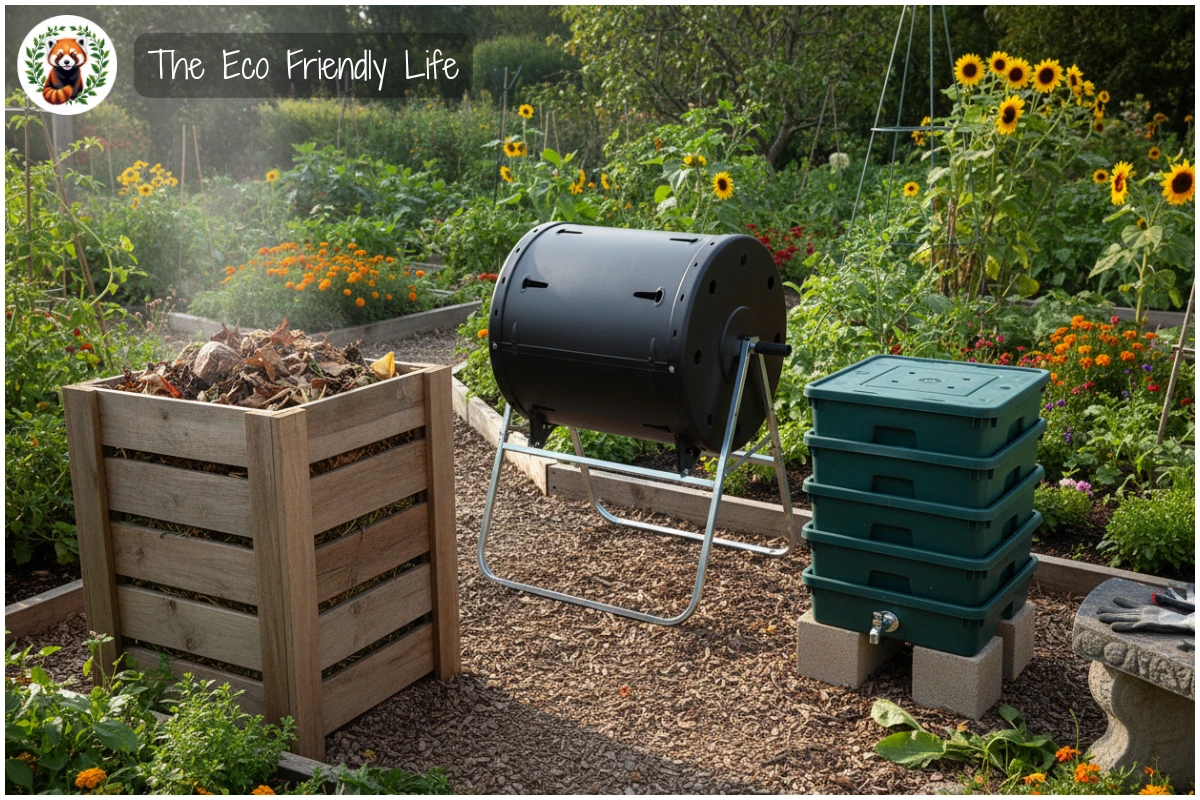
The truth about composting is that there’s a method suited to virtually every living situation, from rural homesteads to city apartments. The key is choosing a system that matches your available space, time commitment, and the types and volumes of materials you want to compost. Before diving into your chosen method, you might benefit from expert guidance and educational resources to help you avoid common pitfalls and succeed faster.
Retailers That Support the Planet – Our Product Recommendations
Whether you’re just beginning your composting journey or looking to deepen your knowledge, having access to quality education and engaging tools can make all the difference. These two retailers offer excellent resources that align perfectly with composting and environmental stewardship.
Our Retailer Recommendation for Adults
Compost Guy Educational Products
Compost Guy offers comprehensive vermicomposting and worm farming education through a range of specialized courses and resources designed by experienced educator Bentley Christie. Their educational lineup includes Easy Worm Farming for those interested in producing and marketing composting worm starter cultures, Compost Guy Ultimate—a complete educational bundle and membership that includes projects like The Walking Windrow and Trench Vermicomposting for taking your efforts to the next level, the Worm Farming Alliance private community offering mentorship from successful worm farmers, Professional Worm Growing Secrets featuring insider information from large-scale Australian pro George Mingin, and the VermBin Plans Package with DIY plans for building wooden continuous-flow composting bins in three different sizes. These resources provide everything from beginner-friendly introductions to advanced business strategies, making vermicomposting accessible and practical for everyone.
Our Retailer Recommendation for Kids/Families
Green Kid Crafts
Green Kid Crafts delivers monthly subscription boxes filled with hands-on science and art activities that inspire children ages 3-10+ to explore nature and environmental topics through creative play and discovery. Founded by environmental scientist Penny Bauder, these award-winning boxes feature 4-6 educator-designed STEAM projects plus a 12-page magazine, with themes covering everything from ecosystems and sustainability to composting and soil health—ideal for families wanting to instill environmental values early. Their monthly subscription boxes are sustainably designed using recycled and eco-friendly materials, making them an excellent gift for families committed to raising the next generation of environmental stewards while learning about topics like organic waste, nutrient cycles, and caring for our planet.
These retailers show how education—whether for adults seeking practical composting skills or children developing environmental awareness—forms the foundation of sustainable living. With the right knowledge and tools in hand, you’re ready to put theory into practice by understanding exactly what materials belong in your compost system and which ones should be kept out.
What to Compost and What to Avoid
Green materials – your nitrogen sources: Nitrogen-rich “green” materials provide the protein that fuels microbial growth and includes items like fruit and vegetable scraps, coffee grounds, fresh grass clippings, fresh garden prunings, and aged animal manures from herbivores. Despite being called “greens,” these materials don’t have to be green in color—coffee grounds are brown but still qualify as nitrogen-rich. Tea bags without staples, crushed eggshells, and wilted flowers also fall into this category.
Brown materials – your carbon sources: Carbon-rich “browns” provide energy for microorganisms and include dried leaves, straw, shredded newspaper and cardboard, wood chips from untreated wood, dry grass clippings, and small twigs. These materials tend to be dry and woody, helping create air pockets in your compost while absorbing excess moisture. Paper towels and napkins, hair from pets and people, and dryer lint can also be composted as browns.
The perfect balance: For backyard composting, aim for approximately two to three parts brown materials to one part green materials by volume. This ratio helps approximate the ideal 25:1 to 30:1 carbon-to-nitrogen ratio by weight that microorganisms need. Too many greens and your pile becomes wet, slimy, and smelly as nitrogen converts to ammonia. Too many browns and decomposition slows to a crawl, with the pile remaining cool and dry.
Definite no-go items: Never compost meat, bones, fish scraps, dairy products, or cooking oils and fats in home composting systems, as these attract pests and can create terrible odors. Pet waste from carnivorous animals like dogs and cats should be avoided due to potential pathogens. Treated or painted wood contains toxic chemicals that can leach into your compost. Diseased plants, invasive weeds with seeds or reproductive structures, and plants treated with persistent herbicides should stay out of your pile as well.
Surprising additions: Many people don’t realize they can compost items like nutshells, cork from wine bottles, old cotton or wool clothing cut into strips, paper egg cartons, pizza boxes, and latex rubber bands. Even bread, pasta, and rice can be composted in small amounts, though they may attract pests if left on top of the pile.
Material size matters: Smaller pieces decompose faster because they offer more surface area for microorganisms to colonize. Chopping up larger items, crushing eggshells, and shredding paper and cardboard all speed up the composting process.
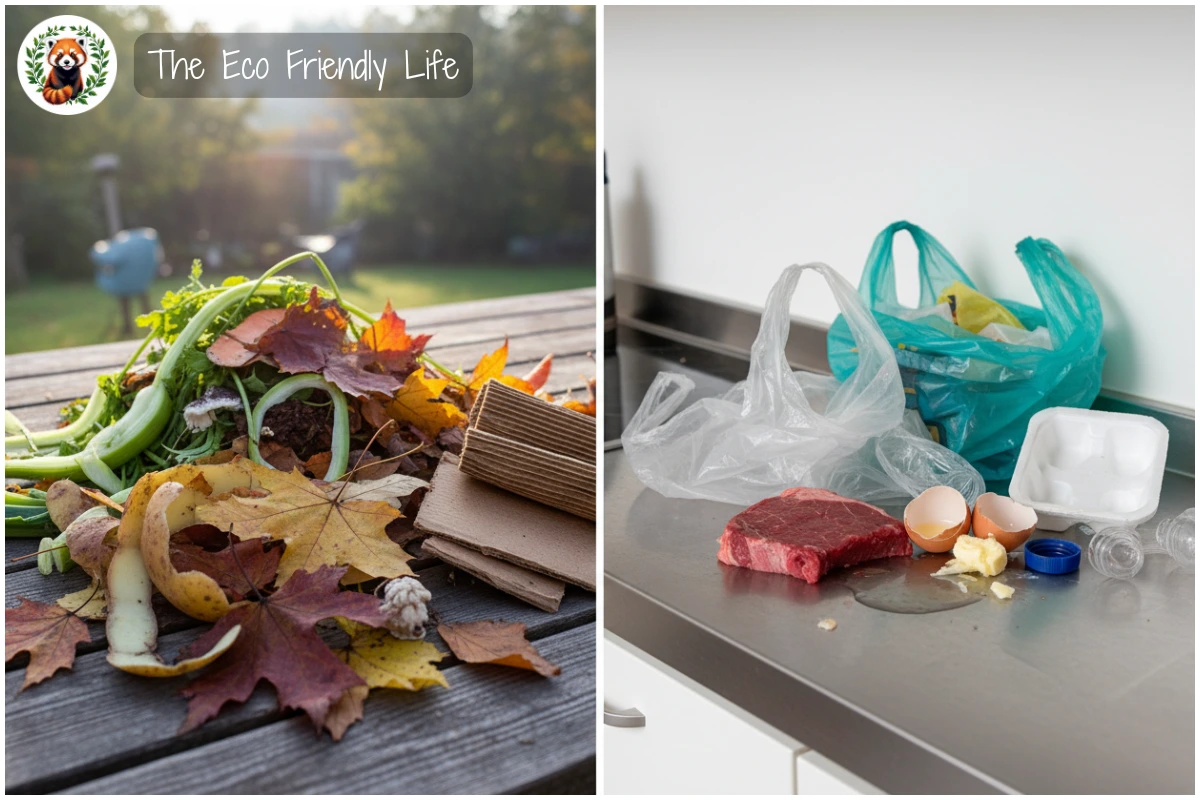
Remember to remove produce stickers before composting fruits and vegetables—these small plastic labels don’t break down and contaminate your finished compost with microplastics.
With a clear understanding of what belongs in your compost and what doesn’t, you’re ready to implement daily practices that will help you build and maintain a thriving compost system. Let’s look at the practical steps you can take starting today.
Practical Daily Tips You Can Action Today
A brief collection of simple, actionable steps you can implement right away to begin or improve your composting practice. These tips require minimal investment but deliver meaningful results in reducing waste and creating nutrient-rich soil.
| Tip | How to Implement | How This Helps |
|---|---|---|
| Keep a kitchen compost caddy | Place a small container with a lid near your food prep area and empty it daily into your outdoor compost system. | Capturing food scraps at the source prevents them from going to landfill and makes composting a convenient daily habit. |
| Layer greens and browns | Each time you add food scraps (greens), cover them with dried leaves or shredded paper (browns) using a 1:2 or 1:3 ratio. | Proper layering maintains the carbon-nitrogen balance, preventing odors and speeding up decomposition. |
| Chop materials into smaller pieces | Use kitchen scissors or a knife to cut scraps into pieces smaller than 5 centimeters before adding them to your compost. | Smaller pieces decompose faster by providing more surface area for microbes to access. |
| Turn or aerate weekly | Use a garden fork, compost aerator tool, or simply tumble your bin once a week to introduce fresh oxygen. | Regular aeration prevents anaerobic conditions that cause foul smells and speeds up the composting process. |
| Monitor moisture levels | Squeeze a handful of compost—it should feel like a wrung-out sponge, damp but not dripping. Add water if too dry or browns if too wet. | Correct moisture levels keep microbes active and healthy, ensuring efficient decomposition. |
| Start a base layer with twigs | When setting up a new pile or bin, begin with a layer of small branches or twigs at the bottom before adding other materials. | Creating air pockets at the base improves drainage and airflow throughout the pile. |
| Collect autumn leaves | Gather and store dried leaves in bags or bins during autumn to use as brown material throughout the year. | Autumn leaves are a free, abundant carbon source perfect for balancing green kitchen scraps. |
| Position bins thoughtfully | Place your compost bin on bare soil in a shaded or partially shaded location with good drainage and easy access. | Direct soil contact allows beneficial organisms to enter while shade prevents the pile from drying out too quickly. |
| Use finished compost as activator | Sprinkle a handful of finished compost or garden soil onto new materials when starting or maintaining your pile. | Inoculating new materials with established microbial communities jumpstarts the decomposition process. |
| Track what works for you | Keep simple notes about what you add, when you turn your pile, and how conditions change over time. | Observing patterns helps you understand your specific system and troubleshoot issues more effectively. |
These straightforward practices form the foundation of successful composting and can be adapted to suit your specific situation, available time, and composting method. Small consistent actions compound over time into meaningful environmental impact and gardening benefits.
As you implement these daily practices, questions will inevitably arise. Let’s address some of the most common concerns that both beginners and experienced composters face.
FAQs
How long does it take for compost to be ready?
Compost can be ready anywhere from three weeks to a year depending on your method, how often you turn the pile, the size of materials added, and ambient temperatures. Hot composting with regular turning produces results fastest, while cold composting requires several months of patience.
Will my compost attract rats and pests?
Properly managed compost should not attract significant pest problems if you avoid adding meat, dairy, oils, and cooked foods, and ensure food scraps are buried within the pile rather than left exposed on top. Using enclosed bins rather than open piles further reduces pest access.
Can I compost during winter?
Yes, though the process slows considerably as microbial activity decreases in cold temperatures. The pile will likely freeze on the surface but may continue decomposing slowly in the center where insulation from surrounding material keeps temperatures warmer.
How do I know when my compost is finished?
Finished compost looks dark and crumbly, smells earthy rather than rotting, has shrunk to about half its original volume, and the original materials are no longer recognizable apart from perhaps some woody pieces. A simple test is growing radish seeds in it—if 75 percent germinate successfully, your compost is ready to use.
Armed with answers to common questions, you can approach composting with greater confidence. Your individual composting efforts contribute to a broader movement of organizations working globally to address food waste, restore soil health, and combat climate change through sustainable organic matter management.
Organizations to Support – Our Recommendations
These global organizations are leading the way in addressing food waste, promoting sustainable agriculture, and supporting composting initiatives worldwide. Your donations help fund crucial programs that align with the principles explored in this article.
- Global Compost Project – This collaborative international initiative promotes compost use worldwide, works to restore carbon-rich soils, and reduces greenhouse gas emissions by diverting organic materials from landfills. Their Hum Sum platform connects composting experts, educators, and enthusiasts globally to share knowledge and advance best practices. You can join their free community and support their mission to make composting information more accessible everywhere.
- Compost Foundation (CREF) – The Compost Research & Education Foundation delivers hands-on composting training, supports innovative research, and provides free educational resources across the United States while advancing the science and practice of composting. Their work directly impacts communities by improving soil health and building sustainable waste management practices. Make a tax-deductible donation to support composting education and research.
- Trees for the Future – This organization teaches farmers sustainable land use practices that include composting as a key component of their Forest Garden program, regenerating degraded soils and breaking cycles of poverty and hunger in communities across Africa. By supporting farmers to implement holistic land management including composting techniques, they create lasting environmental and social benefits. Donate to help train farmers and plant trees worldwide.
Supporting these organizations amplifies your individual composting efforts by funding systemic change and education that reaches communities across the globe. Beyond direct support for composting organizations, expanding your knowledge through expert resources can deepen your practice and help you become a more effective environmental steward.
Resources and Further Reading
These expert sources provide comprehensive, science-based information for anyone wanting to learn more about composting theory and practice.
- Cornell Composting – Cornell University’s Waste Management Institute offers extensive educational resources covering the chemistry, biology, and management of composting systems, including detailed information on carbon-to-nitrogen ratios, compost quality parameters, and troubleshooting guides. Access their comprehensive composting science resources and guides.
- US EPA Composting Resources – The Environmental Protection Agency provides authoritative guidance on composting basics, benefits, and best practices for households, communities, and commercial operations, with emphasis on environmental impacts and waste reduction strategies. Explore the EPA’s official composting information and practical guides.
- Compost Magazine – This independent publication offers in-depth articles, practical guides, and interviews with composting experts covering everything from troubleshooting common problems to advanced techniques and the latest research in composting science. Visit Compost Magazine for detailed guides and expert perspectives.
These resources offer numerous opportunities to expand your composting knowledge and connect with the broader community of composters worldwide.
Our Related Articles
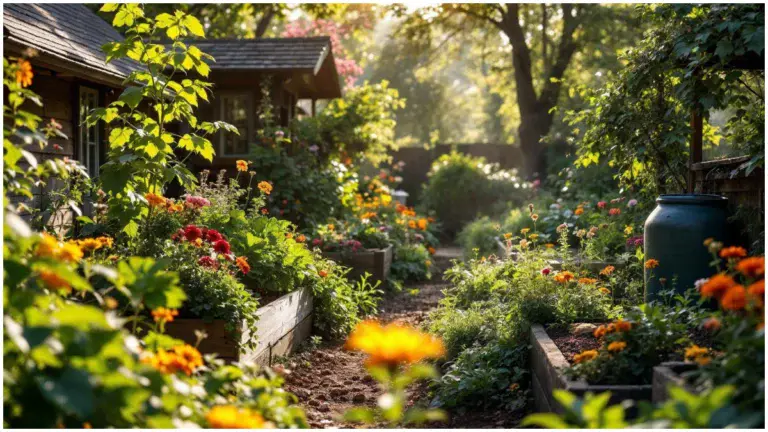
Exploring Sustainable Gardening And Its Benefits
Sustainable gardening represents one of the most accessible pathways toward environmental stewardship that individuals can embrace in their daily lives. Whether you cultivate a small…
Read More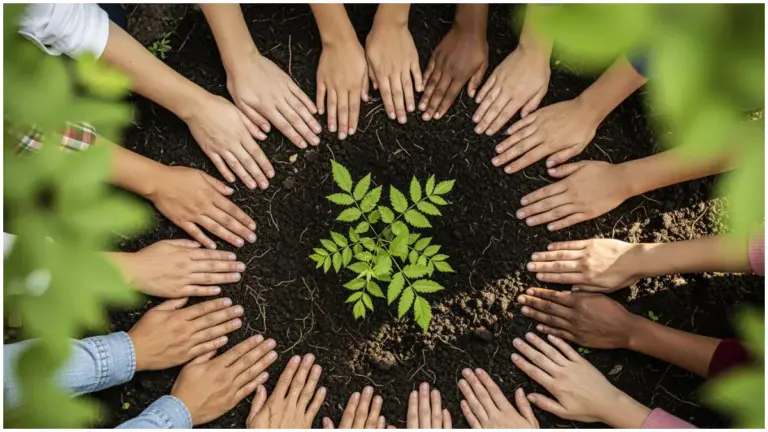
What Does It Mean To Live A Green Lifestyle?
Living a green lifestyle has moved from being a niche movement to a global necessity. As our planet faces unprecedented environmental challenges, from climate change…
Read MoreConclusion
Composting is far more than a gardening technique—it’s a meaningful act of environmental stewardship that anyone can practice regardless of where they live. By transforming organic waste into nutrient-rich soil, you’re simultaneously reducing greenhouse gas emissions from landfills, improving soil health, conserving water, and closing the loop in nature’s nutrient cycles. Whether you choose hot composting, cold composting, vermicomposting, or another method, you’re participating in one of nature’s most elegant recycling systems while taking real action against climate change and waste.
The journey from kitchen scraps to finished compost mirrors the broader transformation our world needs—turning what we once saw as waste into valuable resources. Every banana peel you compost instead of binning, every handful of finished compost you spread in your garden, and every conversation you have about composting ripples outward, contributing to a more sustainable future for our planet.
Now it’s your turn to take action. What’s holding you back from starting your composting journey, or if you’re already composting, what’s one improvement you could make to your system? Share your thoughts, questions, or composting successes in the comments below—your experience might inspire someone else to begin their own composting adventure.


